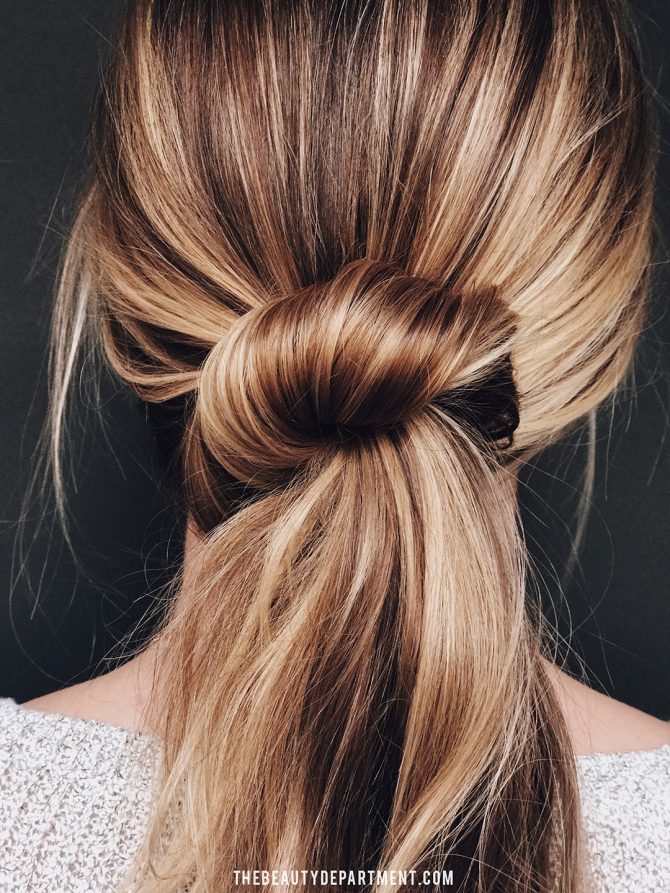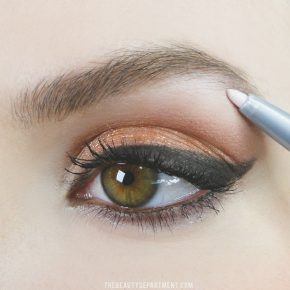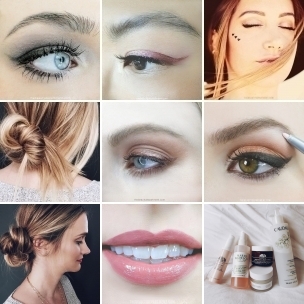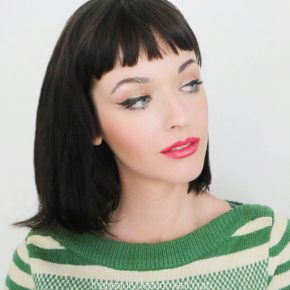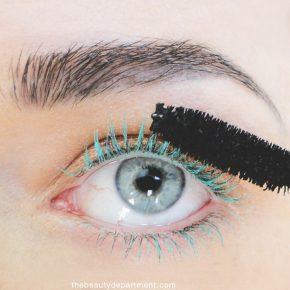hair
AT HOME ROOT TOUCH UP

PHOTOS/POST/DESIGN: KRISTIN ESS

PHOTOS/POST/DESIGN: KRISTIN ESS
I’d like to handle this post with soft hands. Thursday I posted a teaser photo of this on Instagram. Got some heat right away. I’d like to avoid that here by saying up front– we’re not trying to put colorists (like myself) out of work, we’re not trying to get your clients to come in less frequently, and we’re certainly not encouraging people to start box dying their hair at home instead of going to a pro. In no way should any colorists feel threatened by this post. This is basic info that can be found on the internet already, not to mention most of it is inside of the box! This tutorial is not even 1/1000th of what a good colorist knows and it’s not going to give someone enough confidence to leave their stylist to start doing it at home. Please be open minded to the fact that some people cannot make it into a salon for many reasons– budget constraints, distance, their colorist cancels last minute before an important date and they can’t get in anywhere else, etc. In addition, I personally have a very soft spot for at-home box dye experimenting because my first box of “Cinnamon Stick” by Natural Instincts in the 90’s is what made me want to become a colorist in the first place. Experimenting and gaining knowledge is part of life, ladies and g’s.
That being said, let’s do it…


- Detangle your hair with a detangling brush.
- Drape yourself with a cape or an old towel around your neck.
- Determine where your regrowth (your roots) stops.
- Use a tail comb to accurately create 4 sections. When coloring your hair, it’s important to work in clean sections to avoid patches/missed spots.
- Your four sections should look like this.

- If you’re someone who does their own root color regularly, it’s a good idea to invest in a tint brush, color bowl and a small wire whisk. If you prefer to use the bottle from the box, you can definitely do that, but I feel like the brush/bowl method helps with accuracy.
- Use a wire whisk to mix your color & developer together until you see zero “chunks”. Or you can shake it up in the bottle and pour the contents into the bowl.
- This is a tint brush. You can pick one up at most beauty supplies. This one has rounded edges, which I prefer, but you don’t have to get that.
- Put protective gloves on before you start applying color.
*if your skin stains easily or if you’re using a dark/rich color, put a thin application of Vaseline around your hairline and on the tops of your ears to create a barrier.
NOW… this is where opinions will vary. From here on, this is my personal opinion which you can follow or not. This is how I like to color my own hair when I’m in a pinch or can’t find time to get it done by one of my pro friends. If you like to start at the bottom or do anything differently, by all means, go for it! The reason I like to start on top is because I want the color to look most perfect on top and in the front where it’s the most visible. Sometimes when you start on the bottom, the color gets less powerful (aka: oxidizes) by the time you get to the top. If the color is slightly less powerful by the time I get to the bottom, I’m okay with that, but not the other way around. I also find it easier to keep my sections organized when I start in front.
Warning: This application is NOT the same for bleach and in my opinion you should never try to bleach your hair at home. That’s next level and you should always leave that to a professional, no matter what.

- Apply a layer of color at the top center part.
- Using the tail of your tint brush, take a 1/4″ section and flip it up and over to the other side.
- Your sections should look like this. You should be able to see color through the other side. If you can’t see color through the section, it might be too big and you should take a smaller section to insure accuracy.
- When you paint each section, brush the color upward when going above the part and then paint downward below the parting. This will help you make sure you don’t miss any spots.
- If you’re not quite sure that you go it all the way through, you can very lightly comb through to be sure. But again, you could just take smaller sections if you think you missed a spot.
- Once you finish the top/front sections, clip them together so they don’t get mixed into the back sections. Don’t clip where there’s color. Don’t twist the hair either. Just gather it all and gently place the clip below the color.
- The back sections can be tricky. I like to start at the top and do diagonal sections laying them forward as I go. If you look at photos 7 & 8 you’ll see the direction in which I work. Start at the top and work your way to the bottom.
- Check in the mirror behind you and make sure you get your hairline at the neck accurately. Nothing worse than putting your hair in a ponytail and having missed a spot.
- Go around the front hairline once more (especially if you have stubborn grays). Clean up your hairline so you don’t get a giant mark across your forehead.

I am obsessed with glosses. I put one on every client who gets a base color because I feel like it’s just not the same without a gloss. You may remember THIS POST about glazes, which you is the at-home version of a gloss. You can’t buy the type of glosses we use at the salon to use at home so if you’re looking for that kind of shine, book an appointment with your colorist. Otherwise you can glaze it up like this:
- After your hair color processes for the time suggested by the manufacturer it will stop. At that point, you can clip up the top half of your hair. Don’t push it into the color on top of your head. Just set it up there lightly and clip.
- Apply glaze liberally until you get to the top. Let it sit for the suggested time, then rinse everything all together.
Optional: If you’re planning on pulling color through your ends instead of doing a glaze, follow the timing instructions on the box. Every brand is different. This tutorial is specifically for touching up regrowth + glaze, not for doing a solid over-all color– you need a pro for that.


